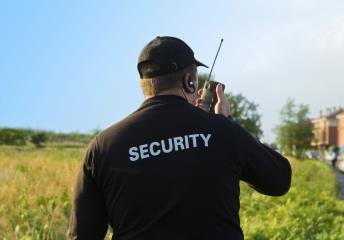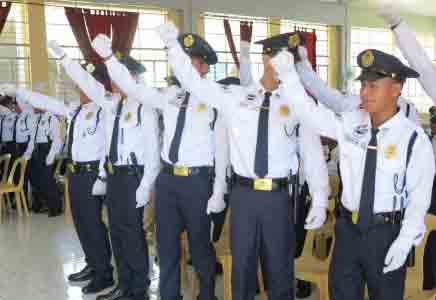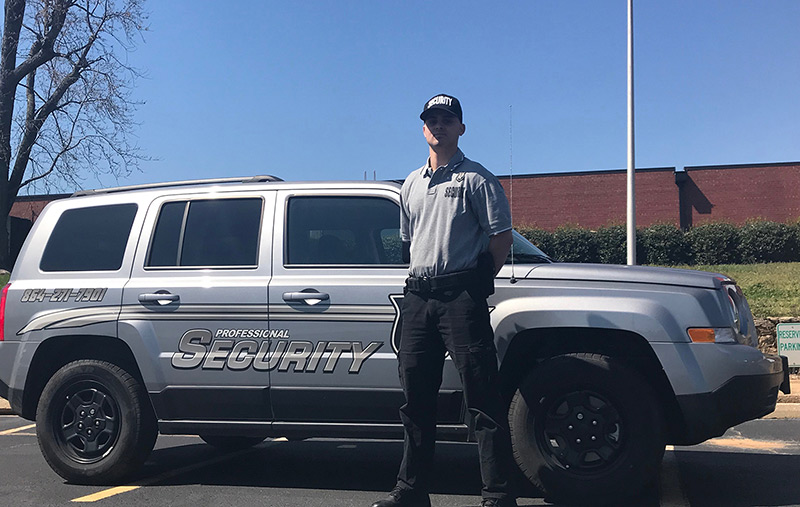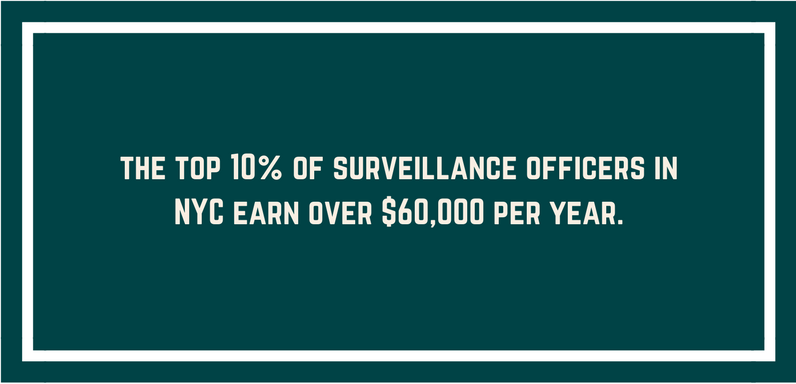Security Guard Force Continuum. Security guards and security officers assigned to an active post may find themselves in a situation where they are required to take a criminal into custody or defend themselves. A training question that always arises is how much force is a security officer allowed use in a tense and potentially dangerous situation?
How Much Force Can be Used under the Security Guard Force Continuum?
Being a Casino Security Guard can be a secretive job. However, we’ve managed to talk to our inside man and tell you the real stories of behind the cameras. The World’s online gaming authority. Security & Public Safety How much does a Security Guard make at Saratoga Casino Hotel in the United States? Average Saratoga Casino Hotel Security Guard hourly pay in the United States is approximately $11.11, which is 11% below the national average. Average Security Guard Pay Trend from 2004 to 2018 In 2004, the average pay for a Security Guard was $31,923. Since then, the average pay has increased to $43,579 in 2018.
As a side note, there seems to be a general view that many casino security officers are armed. They aren't - in fact, there are very few casinos that allow their security to carry firearms nationwide.
Of course, it depends on the situation and how the officer is equipped. For the purpose of this article, assume the security officer is fully equipped with a handgun, PR-24 baton, pepper spray, and handcuffs.
Of course, the security officer would have to be properly licensed, hold necessary permits, be fully trained, and only carry legal and authorized weapons.
Security Guard Force Continuum: Reasonable Force
Unlike police officers, security officers arenotrequired to ever make an arrest. Most security officers merely observe and report and call the police if a crime occurs in their presence.
However, when a security guard or security officer needs to take someone into custody for a crime, he or she must use reason and common sense. The law varies from state-to-state but generally allows citizens to make an arrest and use reasonable force in doing so.
One common definition of reasonable force is simply not to be excessive, under the circumstances. This means to consider the seriousness of the crime, the risk of harm for everyone, and the immediacy of the situation. The preference always is to get a law enforcement response to affect the arrest.
For example, a petty shoplifting suspect might respond to the physical presence of the officer, their verbal commands, and should require no more than holding force to make detention. See my web pageShoplifting: Detention & Arrest.
After office presence and verbal commands fail, a violent suspect might require more physical force to subdue and chemical sprays or the baton might be needed for self-defense. The choices and variations are endless.
Do not use excessive force under the wrong circumstances. You should always consider the use of force as a measured continuum from no force to deadly force. Choosing just the level of force necessary to overcome the obstacle is usually judged as reasonable.
Security Guard Force Continuum: Six Universal Levels
The concept of a force continuum has been around for years and is taught at most police academies. The force continuum is broken down into six broad levels. Each level is designed to have an elastic factor as the need for force changes as the situation evolves.
How Much Do Las Vegas Casino Security Guards Make
It is common for the level of force to go from level two to level three and back again in a matter of seconds. The force level should always be appropriate for the circumstances and adjust up and down as the situation requires.
Security Guard Force Continuum: Level One
Officer Presence. The mere presence of a highly-visible uniformed security officer or a marked vehicle is often enough to stop a crime in progress or prevent future crime. Included in officer presence are standing, walking, running, and use of vehicle lights, horn, or speaker. Without saying a word, an alert officer can deter crime or direct criminals away from a property by use of body language and gestures. At this level, gestures should be non-threatening and professional.
Security Guard Force Continuum: Level Two
Verbal Communication. Used in combination with a visible presence, the use of the voice can usually achieve the desired results. Words can be whispered, used normally, or shouted to be effective.
The content of the message is as important as your demeanor. It’s always best to start out calm but firm and non-threatening. The choice of words and intensity can be increased as necessary or used in short commands in serious situations. The right combination of words in combination with officer presence can de-escalate a tense situation and prevent the need for a physical altercation.
Ongoing training and experience improve the ability of a security officer to communicate effectively with everyone including the police. However, not all aggressive people respond to words alone.
Security Guard Force Continuum: Level Three
Control Holds & Restraints. Certain situations may arise where words alone do not reduce aggression. Sometimes security guards and security officers will need to get involved physically for self-defense or to take someone into custody.
At this level, the minimal force would involve the use of bare hands to guide, hold, or restrain. This does not include offensive moves such as punching, tackling, and choking without legal justification like self-defense from bodily injury. Pain compliance holds could apply here, but only after ordinary holds fail to control an aggressive or dangerous suspect.
An expandable baton or PR-24 can only be used at this level as a self-defense mechanism to block blows or to temporarily restrain a suspect.
Handcuffs can be used as a restraint device if the security officer has been trained to do so. Not every suspect needs to be handcuffed. They should only be used on a person who exhibits physical aggression, poses a real threat or where escape is a real possibility.
Handcuffs should not be applied too tightly and should be double-locked when safe to do so. Once a suspect is handcuffed the security officer is responsible to see that they don’t trip or fall.

It is also important not to pile on top or leave the handcuffed suspect face-down on the ground too long to avoid “positional asphyxiation”. Hog-ties shouldnotbe used by security officers.
Security Guard Force Continuum: Level Four

Chemical Agents. Sometimes when the suspect is violent or threatening, more extreme, but non-deadly measures must be used for self-defense to bring the suspect under control or affect an arrest.
Before moving to level four, it is assumed that other less physical measures had been tried or were deemed inappropriate. When used by surprise, pepper spray and tear gas is an excellent distraction, allowing the security officer time to get away, call the police, or subdue the suspect.
Contrary to media advertising, pepper spray does not have “stopping power” or cause paralysis. An assailant can still grab you, punch you, stab you, or shoot you and will definitely be angrier after being sprayed. Also, tear gas may not be effective on the insane, drug addicts, intoxicated, or hysterical persons. See my web page onSelf-Defense: Tear Gases.
Tear gases (CN, CS, OC) can be hand-held, hand-thrown, or propelled. Security officers usually only get involved with hand-held canisters containing pepper spray.
Pepper spray should not be used to protect the property or to enforce business rules. Remember it’s a defensive weapon to be used when lesser tactics have failed or when a physical threat is imminent. Pepper spray bursts need to be directed in the suspect’s face for maximum result and not sprayed wildly at groups of people.
Even though considered non-deadly, chemical sprays can cause a severe reaction and even death to a suspect with medical or allergic conditions. Also, pepper sprays have a blinding effect and care must be used those spray victims do not fall downstairs or walk into traffic or operate motor vehicles.
Security Guard Force Continuum: Level Five
Temporary Incapacitation. To use force under level five means that the situation was so extreme, violent, and immediate that it was necessary to temporarily incapacitate a suspect prior to the arrival of the police. This includes the use of all methods of non-deadly force beginning with the empty hand up through and including impact tools.
At level five, properly used defensive and offensive moves are allowed under the right circumstances. Choke holds and carotid neck holds can be used but at great risk. Although still taught at many police academies, neck compressions are very risky and used only in extreme situations.
Baton blows to the suspect’s head or throat can be deadly and inconsistent with professional training standards. Temporary incapacitation is used to stop a suspect from injuring you or others long enough to handcuff and restrain them. Baton blows to soft-tissue and certain joint areas are all consistent with professional security training standards and POST.
Stun guns are part of level five, but should not be used by security officers except on special posts and only by those authorized and trained in the use and effects of the device. Stun guns are held-held devices and some like the Air-Taser propel charged darts on leads at a suspect.
Security Guard Force Continuum: Level Six
Deadly Force. When you are in immediate fear of death or great bodily injury at the hands of a perpetrator you are authorized to use deadly force in most states. Check your state laws to be sure.
Deadly force can be applied by your hands, impact tools, or with a firearm. There are few rules, other than negligence, for applying deadly force when it’s justified.

However, deadly force is the highest standard and must be justified. This force continuum will be considered in the aftermath as a test to see if other alternatives to deadly force were used first or were deemed more appropriate.
For security officers, the use of the firearm is inherently dangerous unless reasonable precautions are taken. Discharging a firearm is the most troublesome because of the range of the bullet. You may be justified in shooting a suspect in self-defense that is standing in front of you but not justified in wounding innocent bystanders two-blocks away.
Similarly, you may have been justified in shooting a suspect charging at you with a knife, but not justified after he turns to run away. As a general rule, handguns should not be fired at moving vehicles, except in extreme life-threatening circumstances.
Handguns should never be pulled and brandished as a deterrent or be used as a control tool under level three.
Security Guard Force Continuum: Training is Key
To fully understand the force continuum it must be periodically discussed and reviewed by security supervisors. Practical exercises will help re-enforce the training and cause the reactions to become more appropriate instead of instinctual. In a crisis situation, fear and adrenaline have a way of accelerating the force continuum. Practice and ongoing training exercises will ease the effects of stress and make a safe outcome more predictable.
For More Information:
Learn More about Premises Liability Litigation
Download 113-page eBook written by Security Expert Chris E. McGoey
- Evaluating Crime Foreseeability and Inadequate Security Cases
- Biographyof Chris McGoey
- Testimonialsfrom a few clients
Contact Security Expert Chris E. McGoey
Email 213-537-3505 Twitter
Security Guard Force Continuum. Security guards and security officers assigned to an active post may find themselves in a situation where they are required to take a criminal into custody or defend themselves. A training question that always arises is how much force is a security officer allowed use in a tense and potentially dangerous situation?
How Much Force Can be Used under the Security Guard Force Continuum?
Of course, it depends on the situation and how the officer is equipped. For the purpose of this article, assume the security officer is fully equipped with a handgun, PR-24 baton, pepper spray, and handcuffs.
Of course, the security officer would have to be properly licensed, hold necessary permits, be fully trained, and only carry legal and authorized weapons.
Security Guard Force Continuum: Reasonable Force
Unlike police officers, security officers arenotrequired to ever make an arrest. Most security officers merely observe and report and call the police if a crime occurs in their presence.
However, when a security guard or security officer needs to take someone into custody for a crime, he or she must use reason and common sense. The law varies from state-to-state but generally allows citizens to make an arrest and use reasonable force in doing so.
One common definition of reasonable force is simply not to be excessive, under the circumstances. This means to consider the seriousness of the crime, the risk of harm for everyone, and the immediacy of the situation. The preference always is to get a law enforcement response to affect the arrest.
For example, a petty shoplifting suspect might respond to the physical presence of the officer, their verbal commands, and should require no more than holding force to make detention. See my web pageShoplifting: Detention & Arrest.
After office presence and verbal commands fail, a violent suspect might require more physical force to subdue and chemical sprays or the baton might be needed for self-defense. The choices and variations are endless.
Do not use excessive force under the wrong circumstances. You should always consider the use of force as a measured continuum from no force to deadly force. Choosing just the level of force necessary to overcome the obstacle is usually judged as reasonable.
Security Guard Force Continuum: Six Universal Levels
The concept of a force continuum has been around for years and is taught at most police academies. The force continuum is broken down into six broad levels. Each level is designed to have an elastic factor as the need for force changes as the situation evolves.
It is common for the level of force to go from level two to level three and back again in a matter of seconds. The force level should always be appropriate for the circumstances and adjust up and down as the situation requires.
Security Guard Force Continuum: Level One
Officer Presence. The mere presence of a highly-visible uniformed security officer or a marked vehicle is often enough to stop a crime in progress or prevent future crime. Included in officer presence are standing, walking, running, and use of vehicle lights, horn, or speaker. Without saying a word, an alert officer can deter crime or direct criminals away from a property by use of body language and gestures. At this level, gestures should be non-threatening and professional.
Security Guard Force Continuum: Level Two
Verbal Communication. Used in combination with a visible presence, the use of the voice can usually achieve the desired results. Words can be whispered, used normally, or shouted to be effective.
The content of the message is as important as your demeanor. It’s always best to start out calm but firm and non-threatening. The choice of words and intensity can be increased as necessary or used in short commands in serious situations. The right combination of words in combination with officer presence can de-escalate a tense situation and prevent the need for a physical altercation.
Ongoing training and experience improve the ability of a security officer to communicate effectively with everyone including the police. However, not all aggressive people respond to words alone.
Security Guard Force Continuum: Level Three
Control Holds & Restraints. Certain situations may arise where words alone do not reduce aggression. Sometimes security guards and security officers will need to get involved physically for self-defense or to take someone into custody.
At this level, the minimal force would involve the use of bare hands to guide, hold, or restrain. This does not include offensive moves such as punching, tackling, and choking without legal justification like self-defense from bodily injury. Pain compliance holds could apply here, but only after ordinary holds fail to control an aggressive or dangerous suspect.
An expandable baton or PR-24 can only be used at this level as a self-defense mechanism to block blows or to temporarily restrain a suspect.
Handcuffs can be used as a restraint device if the security officer has been trained to do so. Not every suspect needs to be handcuffed. They should only be used on a person who exhibits physical aggression, poses a real threat or where escape is a real possibility.
Handcuffs should not be applied too tightly and should be double-locked when safe to do so. Once a suspect is handcuffed the security officer is responsible to see that they don’t trip or fall.
It is also important not to pile on top or leave the handcuffed suspect face-down on the ground too long to avoid “positional asphyxiation”. Hog-ties shouldnotbe used by security officers.
Security Guard Force Continuum: Level Four
Chemical Agents. Sometimes when the suspect is violent or threatening, more extreme, but non-deadly measures must be used for self-defense to bring the suspect under control or affect an arrest.
Before moving to level four, it is assumed that other less physical measures had been tried or were deemed inappropriate. When used by surprise, pepper spray and tear gas is an excellent distraction, allowing the security officer time to get away, call the police, or subdue the suspect.
Contrary to media advertising, pepper spray does not have “stopping power” or cause paralysis. An assailant can still grab you, punch you, stab you, or shoot you and will definitely be angrier after being sprayed. Also, tear gas may not be effective on the insane, drug addicts, intoxicated, or hysterical persons. See my web page onSelf-Defense: Tear Gases.
Tear gases (CN, CS, OC) can be hand-held, hand-thrown, or propelled. Security officers usually only get involved with hand-held canisters containing pepper spray.
Pepper spray should not be used to protect the property or to enforce business rules. Remember it’s a defensive weapon to be used when lesser tactics have failed or when a physical threat is imminent. Pepper spray bursts need to be directed in the suspect’s face for maximum result and not sprayed wildly at groups of people.
Even though considered non-deadly, chemical sprays can cause a severe reaction and even death to a suspect with medical or allergic conditions. Also, pepper sprays have a blinding effect and care must be used those spray victims do not fall downstairs or walk into traffic or operate motor vehicles.

Security Guard Force Continuum: Level Five
Temporary Incapacitation. To use force under level five means that the situation was so extreme, violent, and immediate that it was necessary to temporarily incapacitate a suspect prior to the arrival of the police. This includes the use of all methods of non-deadly force beginning with the empty hand up through and including impact tools.
At level five, properly used defensive and offensive moves are allowed under the right circumstances. Choke holds and carotid neck holds can be used but at great risk. Although still taught at many police academies, neck compressions are very risky and used only in extreme situations.
Baton blows to the suspect’s head or throat can be deadly and inconsistent with professional training standards. Temporary incapacitation is used to stop a suspect from injuring you or others long enough to handcuff and restrain them. Baton blows to soft-tissue and certain joint areas are all consistent with professional security training standards and POST.
Stun guns are part of level five, but should not be used by security officers except on special posts and only by those authorized and trained in the use and effects of the device. Stun guns are held-held devices and some like the Air-Taser propel charged darts on leads at a suspect.
Security Guard Force Continuum: Level Six
Deadly Force. When you are in immediate fear of death or great bodily injury at the hands of a perpetrator you are authorized to use deadly force in most states. Check your state laws to be sure.
Deadly force can be applied by your hands, impact tools, or with a firearm. There are few rules, other than negligence, for applying deadly force when it’s justified.
However, deadly force is the highest standard and must be justified. This force continuum will be considered in the aftermath as a test to see if other alternatives to deadly force were used first or were deemed more appropriate.
For security officers, the use of the firearm is inherently dangerous unless reasonable precautions are taken. Discharging a firearm is the most troublesome because of the range of the bullet. You may be justified in shooting a suspect in self-defense that is standing in front of you but not justified in wounding innocent bystanders two-blocks away.
How Much Does A Casino Security Guard Make Per
Similarly, you may have been justified in shooting a suspect charging at you with a knife, but not justified after he turns to run away. As a general rule, handguns should not be fired at moving vehicles, except in extreme life-threatening circumstances.
Handguns should never be pulled and brandished as a deterrent or be used as a control tool under level three.
Security Guard Force Continuum: Training is Key
To fully understand the force continuum it must be periodically discussed and reviewed by security supervisors. Practical exercises will help re-enforce the training and cause the reactions to become more appropriate instead of instinctual. In a crisis situation, fear and adrenaline have a way of accelerating the force continuum. Practice and ongoing training exercises will ease the effects of stress and make a safe outcome more predictable.
For More Information:
Learn More about Premises Liability Litigation
Download 113-page eBook written by Security Expert Chris E. McGoey
- Evaluating Crime Foreseeability and Inadequate Security Cases
- Biographyof Chris McGoey
- Testimonialsfrom a few clients
Contact Security Expert Chris E. McGoey
Email 213-537-3505 Twitter